This is part of a series of essays on the basics of product management and building products that people need.
In this essay, I will discuss two different types of product work: value creation and value delivery. You will learn how these types of product work differ, in what conditions each of them has maximum impact, and what problems arise when you confound them.
The problem that a product solves for users largely determines the skills a product manager needs to successfully work on it. But this is far from the only variable that affects the nature of product work.
Some product managers focus more on creating value, others on delivering the value to users. Each of these types of work must be applied at the right time, but they are often mixed up.
→ Test your product management and data skills with this free Growth Skills Assessment Test.
→ Learn data-driven product management in Simulator by GoPractice.
→ Learn growth and realize the maximum potential of your product in Product Growth Simulator.
→ Learn to apply generative AI to create products and automate processes in Generative AI for Product Managers – Mini Simulator.
→ Learn AI/ML through practice by completing four projects around the most common AI problems in AI/ML Simulator for Product Managers.
↓ All posts of the series:
→ Addressing user pain points vs solving user problems better.
→ Product manager skills: evolution of a PM role and its transformation.
→ Product metrics, growth metrics, and added value metrics.
→ Customer retention levers: task frequency and added value.
→ How to measure the added value of a product.
→ Should a product be 10 times better to achieve product/market fit?
→ Product/market fit can be weak or strong and can change over time.
→ Two types of product work: creating value and delivering value.
→ What is the difference between growth product manager, marketing manager, and core PM.
Two types of product work
The basis of product work is to increase the efficiency of solving user problems. To work on increasing the effectiveness of a product, you must understand what problem your product addresses and the factors that determine a user’s choice of solution. Getting ahead of direct and indirect competitors in these areas will increase the added value of the product and strength of its product/market fit.
This work can be divided into two processes:
- Core Product Work: Creating objective value by adding new functionality and improving key features.
- Growth Work: Optimizing ways to deliver the value of the product to users.
To understand the difference between these types of work, let’s look at the example of a public park where people come to relax and have a good time.
The difference between creating and delivering value
Say you’re in charge of a public park. As you’re doing your research, you learn that a significant part of the park’s visitors are parents who come with their children. One of the tasks they want to accomplish when visiting the park is entertaining their children.
An example of a project aimed at solving this subtask and, by extension, increasing the objective value of the park, will be the design and development of playgrounds.
You spend several months on this project and create the first playground platform. Your tests show that both parents and children really like the playground, and the space meets all safety requirements.
The playground creates added value and has a product/market fit. But if you place the playground at a random place in the park, then only a small portion of the visitors will experience its value—many will not even know it exists. It may also be that surrounding objects can negatively affect the experience of using the playground.
This is where the second type of product work begins: delivering the created value to your users.
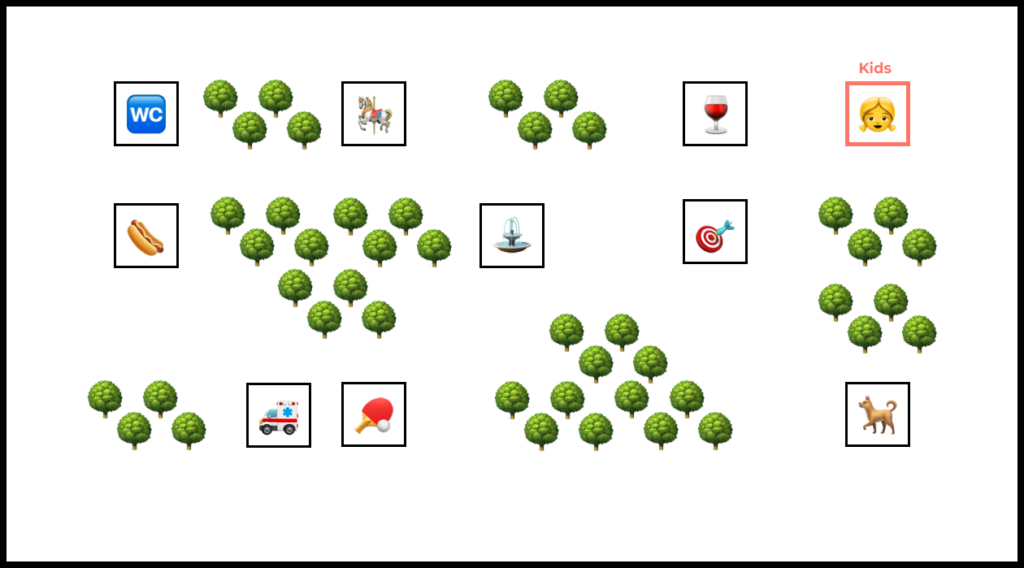
The playground must be properly located in the park; it should have other supporting facilities around it (tables, fences, toilets); the flow of people should be optimized; and it should not be in conflict with other objects. Information about the playground must be added to promotional materials (e.g., fliers, ads), put on the park map, and added to navigation signs. It may also be worth reconsidering the location of food shops that provide additional monetization opportunities for the park.

Building a high-quality, in-demand playground is an example of Core Product Work. This project increases the potential efficiency of solving the problem of park visitors.
On the other hand, installing a playground in the park ecosystem, optimizing the flow of people, and conveying information about this new feature to visitors is Growth Work. Its aim is to deliver the value of the playground to its potential users.
What is the difference between the two types of product work
Chamath Palihapitiya, former leader of the original Growth Team at Facebook, offers the following framework in one of his talks.
To achieve rapid growth, a team must do three things:
- Create value: To do this, you need to build a product that has product/market fit and solves the problem of people more efficiently than alternatives. This is core product work.
- Deliver this value to its target new users as quickly as possible: This is work on the activation and key funnels in the product. This is Growth work.
- Help users get value from the product as often as possible: This is Product & Growth Work.
You can only experience the value of Facebook if you have friends on the social network. Therefore, in the early stages of Facebook, one of the key areas of work for the Growth Team was to maximize the share of new users with friends who could experience the value of the product.
Just out of curiosity, try to create a new account on Facebook and evaluate all of the product solutions that have been built to help people find friends and experience the value of the service.
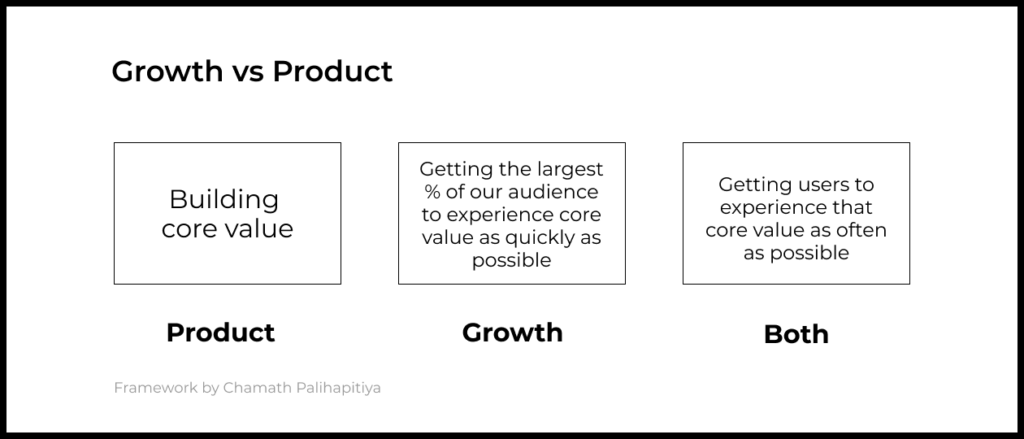
How to choose your focus
Depending on the stage of product development, focusing on each type of product work will yield different results.
Ideally, work should be carried out simultaneously at both levels. Part of the team should focus on increasing product efficiency by tailoring it to the needs of new adjacent market segments or by improving its key characteristics. At the same time, another part of the team should work on building support structures and optimizing the funnels to deliver that value to the users.
But often, teams or product managers gravitate towards one type of product work, which leads to imbalance. Let’s discuss when to focus on creating value and when to focus on delivering value.
When to Focus on Delivering Value
If the product team has been developing and adding new features and capabilities for a long time, then it’s probably time to focus on delivering the value to the product’s users.
Each feature can have value and increase the potential effectiveness of the product. But many users won’t know about the product’s features because of its growing complexity.
If you realize that your users are discovering and using only a small part of the features in the product, then it’s a sign that you don’t have enough focus on delivering value. For example, a team of product for professional athletes could invest a lot of money and resources in creating content with recommendations from professional doctors. But in interviews, users say that they didn’t know about it or thought that it was user-generated content. In this case, the Growth Work will have a much greater impact on the outcome than the Core Product Work.
Microsoft Office is an example of a product where the task of delivering value to users has not been completely fulfilled. Most users of Word or Excel use only a small fraction of the products’ features, even though they could significantly increase the efficiency of solving their problems. Excel is a very powerful tool with a huge value potential, but in many cases, that value is not fully used or understood.
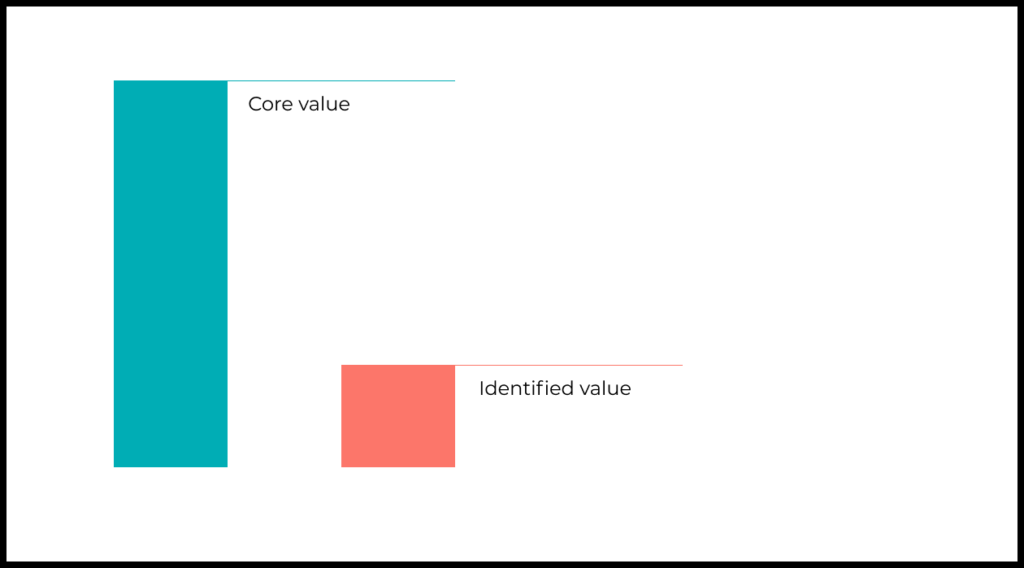
When to Focus on Adding Value
The opposite happens when the team has already optimized the key funnels and other mechanisms for conveying product value, sometimes to the extent that further investments in this direction don’t bring any results. All users already fully understand the product’s value. Those for whom the product creates sufficient added value start using it, and others leave.
This is the situation that the Joom marketplace team faced at one point.
After the product achieved product/market fit, the team’s efforts in optimizing the mechanisms for delivering the app’s value gave good results for quite some time. The machine learning team was working on optimizing the recommendation engine and pricing, and the product team was testing different ways to remove friction from the key funnel. A remarkable proportion of experiments had a statistically significant positive effect on the key metrics.
But over time, the effect of this work began to decline. The team was getting closer and closer to fully conveying the added value potential of the product to its users.
In such situations, it is necessary to shift the focus to work on increasing the objective value of the product, that is, how effectively it solves its target problem. In the case of an e-commerce marketplace, most often this work comes down to improvements at the level of prices, assortment, logistics, and customer service. These are the key variables that determine the effectiveness of the solution for the end customer.
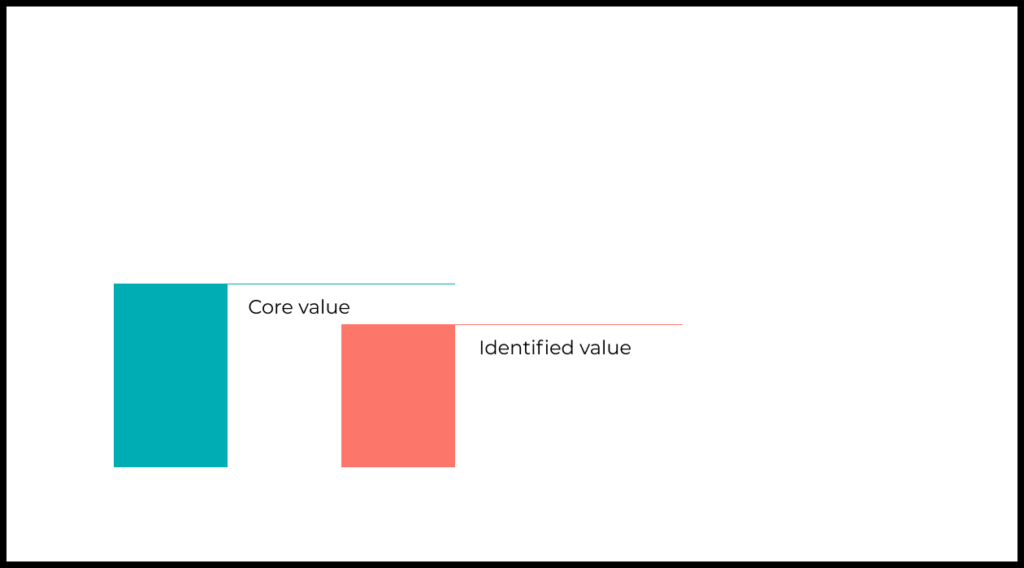
What happens when the team can’t distinguish between two types of product work
Creating and delivering value are two different types of work. It is rare to find people who are equally good at both. Each type of product work requires a different set of skills.
Creating value involves more creative work, deep immersion, and detailed understanding of user needs and decision-making under high uncertainty. Such work relies more on qualitative research methods.
Delivering value, on the other hand, requires organization, maintaining a high pace of experimentation, meticulous optimization of all key pathways in the product, and the ability to get the most out of every piece of the product. In such work, data often plays a more important role in decision making than qualitative research.
If you hire a product manager whose expertise is to create value, and your company is at the stage where you need to convey the existing value to users, then she won’t be very effective. Most likely, she will try to apply the skills and tools that worked before, but they will not bring good results.
You will see similar unsatisfying results if your product is in a stage where it needs added value but you hire a product manager who is focused on delivering value. She will try to optimize onboarding, monetization model, and key funnels. But if the key funnels are already optimized and there is no new value to deliver, it won’t help much.
In this scenario, the growth-focused product manager might in fact produce negative results. Sometimes, a complete focus on delivering value without adding value leads the team to gradually steer the product towards deceiving users. The list of things this product promises to its users grows (because this shows a positive effect on funnel conversions), but the real value remains the same. In pursuit of results, such product managers may begin to resort to “dark patterns” and deceitful mechanisms, or exploit other misleading mechanisms. This is how apps with zero value and with expensive subscriptions are created. The same can be said about courses that guarantee employment for a difficult job.
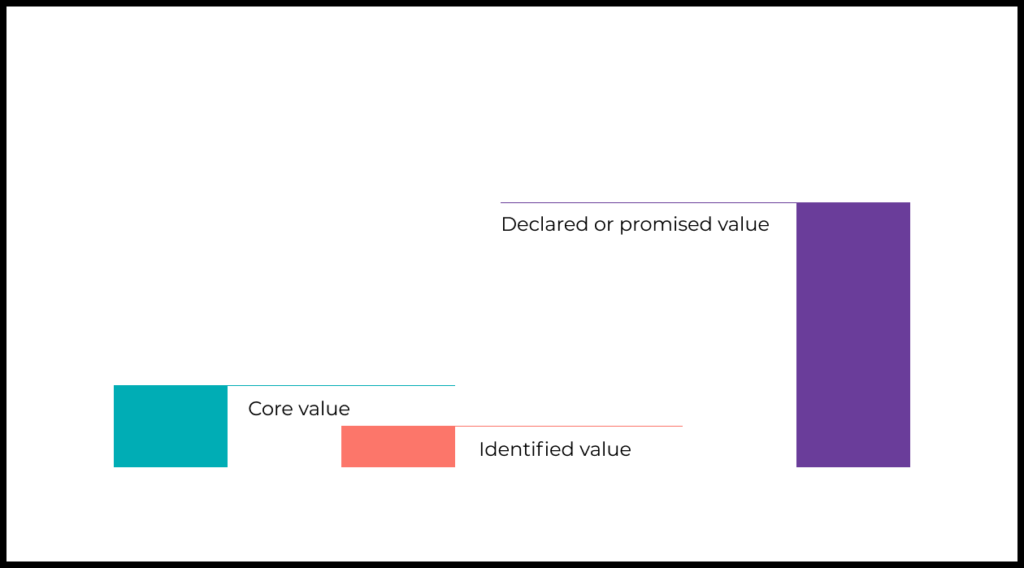
Although different, creating and delivering value are both important
The team can create functionality that has the potential to be of great value to people. But if you don’t build supporting structures that help users discover the new feature, explain its benefits, and help to test them and experience the value, then its impact will remain small.
It is important to properly balance the work of creating and delivering value. For example, in many Facebook teams, this process is structured as follows:
- Some people are responsible for creating value (usually the Core Product Team).
- Others work on realizing the maximum potential of the created value by experimenting different ways of integrating it into the current product flow, optimizing the form of presentation, and sharpening the product for specific audience segments (Growth Team).
The right balance of investment in each of these areas gives the maximum result for the efforts made.









